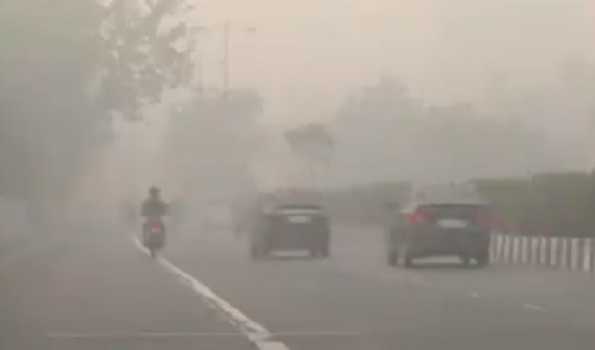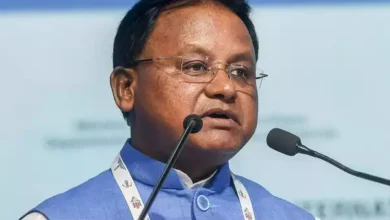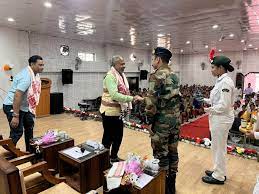Is violence an inescapable part of life for people in police or judicial custody?

New Delhi, Jan 28 (IANS) The expression ‘Custodial Violence’ is not defined under any law. It is an integration of two words ‘custodial’ and ‘violence’.
The word custody denotes guardianship and protection; it does not hold any evil symptoms even when applied to arrest or imprisonment under judicial and penal safekeeping.
In an actual sense, the term violence is the act of forceful thrusting harm on a person or his property.
Numerous instances of police brutality frequently make the news, raising the urgent question of who will put an end to this approved inhumane treatment.
“It’s critical to recognise the typical patterns of torture employed by Indian police. It is important to note the findings of the study on the torture of political prisoners in India that was presented to the U.S. House of Representatives’ subcommittee on international relations in March 1976,” Advocate Akankshya Misra said.
As per the report, various gruesome physical forms of torture include stamping on the bare body with heeled boots, beating with canes on the bare soles of feet, rolling a heavy stick on the shins with a policeman sitting on it, burning with lighted cigarettes and candle flame, denying food, water, and sleep and then forcing the victim to drink his own excreta, slapping with cupped hands on both ears until the victim bleeds and loses consciousness, made to forcibly lie nude on ice slabs, stripping the victim, blackening his face, and parading him in public, inserting live electric wires into body crevices, suspending the victim by his wrists, beating on the spine, beating with a rifle butt, and making the victim crouch for hours in a “Z” position.
“When the inmates of the custody are women, the most vulnerable members of society, they are subjected to additional and unspeakable forms of torture such as pressing lighted cigarettes on sensitive parts, inserting iron rods or sticks along with chilli powder in their private parts, torturing children in the presence of mothers, and so on,” Misra told.
She added: “They are vulnerable to molestation and rape not only by custodial staff but also by male inmates in jails. As evidenced by the Mathura Rape case, police officers did not spare even minor girls from torture.”
In recent years, concerns over custodial violence have heightened, shedding light on cases of jail harassment.
Misra said that despite stringent prison laws and established regulations, the implementation of legal rights for prisoners remains a challenge.
Notable instances include Sukesh Chandrashekhar, an undertrial alleging violence by jail officials, Gulfisha Fatima, an MBA graduate facing Delhi riots charges, who reported mental harassment in Tihar Jail, and Muhammad Amir Khan, an acquitted Delhi resident, recounting brutal police torture during his 14-year imprisonment.
Moreover, a tragic incident in Tamil Nadu in 2020 involving a father and son who died in police custody sparked nationwide outcry, drawing parallels to the George Floyd incident and prompting calls for police reform.
As per the most recent national data, the Tihar prison complex in Delhi saw the most ‘clashes’ (57) between prisoners and staff in 2019. Three prisoners died as a result of the violence on the jail grounds, while 279 inmates and 37 jail officials were severely injured.
“The data clearly shows that clashes are a recurring feature of Delhi’s correctional administration. While the central government has consistently blamed prison violence on security threats posed by specific types of prisoners, the Delhi government has ignored the need to investigate the administrative, behavioural, and psychosocial issues that cause tensions in prisoner-staff relationships,” Misra said.
In the recent past, there have been two infamous cases pertaining to deaths in judicial custody i.e. one of Ankit Gujjar and another of the gangster Tillu Tajpuriya.
Both the Ankit Gujjar case and Tillu Tajpuriya murder case led to serious questions being raised on Tihar Administration and the functioning of Delhi jails. In fact, the after effects of Tillu murder case saw 80 Tihar jail officials being transferred including 5 deputy superintendents.
“Delhi jails are known for their notoriety. Even in the Sukesh Chandrashekhar case, several officials were arrested, multiple transferred and suspended including the then DG prisons,” Advocate Anant Malik said.
“But have the jails learnt their lesson? The answer seems to be no and a major overhaul in terms of policy is required,” Malik said.
Third-degree torture of suspects held in custody is considered standard by the police. The police frequently simulate extra-legal and violent tactics for case discovery and occasionally execute notable offenders by staging fake encounters.
“The perception of Indian police forces as being full of sadists and bloodthirsty maniacs is fostered by reports of police violence. The important question of whether or not the police themselves should engage in unnecessary violence or excessive use of force is brought up by the police’s mandate to use torture to stop and prevent violence,” Malik said.
He said that a police officer who uses the abhorrent third degree methodology brutalises and devalues himself to the level of a criminal.
“He is unable to make the case that such a terrible act was carried out for practical reasons, for the sake of society, or in order to bring a criminal to justice,” Malik added.
In the last ten years, many surveys and studies have shown that people don’t like the police. In the same way, the surveys and studies that were done to find out how the police feel about the community also came to broad negative conclusions.
The police justification for using torture, particularly third-degree interrogation, appears to be based on factors such as the duration of custody, distrust of their profession, and the desire for quick recoveries.
The Amnesty International Report highlights poor working conditions, inadequate training, and political influence as contributing factors.
However, caution is expressed regarding the need to address the lack of trust in the police recording confessions.
“The emphasis on evidence recovery, especially in routine cases like theft, underscores the pressure on police to show success despite the inadmissibility of statements obtained through torture. This presents a complex contradiction in their justifications,” Malik said.
The Indian Constitution includes a comprehensive list of fundamental rights. It incorporates the vast majority of the provisions of the Universal Declaration of Human Rights, the International Covenant on Civil and Political Rights, and other international treaties. India has ratified at least thirteen international human rights treaties.
However, Malik said that India should consider ratifying key international treaties, including the Optional Protocol to the International Covenant on Civil and Political Rights, Convention against Torture, and Convention on the Rights of the Child.
“This can enhance its commitment to human rights on the global stage,” Malik said.
He said that implementing these measures collectively can contribute to a more rights-conscious and accountable criminal justice system in India.
Overhaul outdated laws such as the Police Act of 1861 and colonial-era Jail Manuals. Implement recommendations from the National Police Commission’s reports to align the police department with modern human rights standards.
Revise terminology used for prisoners to reflect a more reformative approach rather than focusing solely on punitive labels. Update the Prison Statistics of India report to provide a more nuanced understanding of factors contributing to prison violence.
Enforce strict prohibitions on custodial and judicial violence, and establish clear consequences for those found guilty. Consider criminal prosecution for individuals accused of committing custodial torture to serve as a deterrent.
Install separate rooms with CCTV cameras in police stations for interrogation purposes. This measure can promote transparency and accountability in police interactions.
Develop comprehensive training programs for police officers based on specific guidelines to prevent any form of violence. Emphasise human rights principles and ethical conduct in law enforcement.
Ratify the United Nations Convention Against Torture, leading to a systematic review of custodial methods and practices, ensuring alignment with international human rights standards.
Act on the Law Commission of India’s 273rd Report, advocating for criminal prosecution rather than just administrative action for individuals accused of custodial torture. This can establish a more effective deterrent against such actions.
Ensure that prison conditions comply with human rights standards. This includes addressing issues related to overcrowding, sanitation, healthcare, and overall treatment of prisoners.






